wow,build my own test device with 10 switchable places for emitters/optics, so I'm able to test 10 different configurations at one cave trip.
I bet You plan to make more than just one lamp - quite some efforts ...
 Help Support Candle Power Flashlight Forum
Help Support Candle Power Flashlight Forum
wow,build my own test device with 10 switchable places for emitters/optics, so I'm able to test 10 different configurations at one cave trip.

wow,
I bet You plan to make more than just one lamp - quite some efforts ...
I guess it depends what you mean by 'improve'.But up to now, I know only one really good commercial headlamp for caving (www.scurion.ch) - much too expensive! And even this one could be further improved with respect to color temperature and pattern of its bare emitter working light.
I can't say I've noticed a colour rendition problem with LEDs when caving, whether illuminating rock or other cavers. Even side-by-side with halogen or carbide, the only obvious difference seems to be in terms of colour temperature, not rendition. I guess there just aren't enough things underground where green is important.As for colour rendering - whatever the apparent colour temperature, 'white' leds have very little green and almost no red in their spectrum, so colour rendering is poor compared with a well-driven halogen lamp.
I suspect, being incandescent, a carbide lamp had plenty of red and also most of the spectrum - at least as far as blue.
And - my preference and I know some people here disagree strongly - I favour adjustable light output - either by continuous control or in small steps - or at least three level including an I-am-only-eating-my-sandwiches-and-don't-want-to-blind-everyone setting.
Steve
I can't say I've noticed a colour rendition problem with LEDs when caving, whether illuminating rock or other cavers.....
I like having multiple powers, but after playing around, for practical purposes I reckon power steps of less than a factor of 2 or 3 are probably too close to be useful.
Perhaps you're thinking of blue leds?As for colour rendering - whatever the apparent colour temperature, 'white' leds have very little green and almost no red in their spectrum, so colour rendering is poor compared with a well-driven halogen lamp.

I'm not sure about dull, but most of the stuff I've seen underground tends to be somewhere between white, black and brown.Just thought I would point out the colour thing in case there are purists wanting to enjoy strata to the full. I suppose limestone is pretty dull wherever you find it.
I guess a lot comes down to the casing. If you're making your own housing and trying to avoid possible water ingress points, it's certainly possible to do something with internal reed switches/external magnets. With a cylindrical housing, making an external rotating ring with a magnet in, (as some people do with torches) is probably not too hardto at least get working, though making one that looks good may be rather harder (assuming there isn't some objet trouve lying around that does the business).Apart from the cable, my biggest question was how to make a switch or control robust enough while keeping it small.
I think the old luxeons that were essentially cold white LEDs that ended up being "yellowish" by chance were not the same as current-generation warm white Cree LEDs, which appear closer to blackbody and less "greenish" than bin outliers that just happen to be warmer.I guess it depends what you mean by 'improve'.
White LEDs can seem cold, but yellower ones aren't necessarily much better. In the days when I made luxeon-powered lights, and the LEDs I got weren't sold by colour bin, about half were 'proper' white, 30% yellowish, with the rest a little blue (apart from a couple with a purple tint).
Going straight from using carbide, the yellowish ones maybe seemed a bit less cold than the white ones, but didn't seem quite as good for actually lighting things up, or for colour accuracy.
I believe different color temps suit different applications. For example, or trying to do intensive shop/design work, I like 5000k. For "ambient" light, I like 3000k. In most other cases, I prefer a compromise of ~3500k. I generally don't like to stray outside the range of 3000k-5000k.Equally, though there can be initial comments when switching to a 'colder' light, that does seem largely to be a matter of adjustment.
If you want a 180% spread, do your buddies a favor and use a diffuser over the LEDs -- this will help with glare immensely. You can buy lenses from Flashlightlens.com with diffusion film and AR-coatings already installed. I'd recommend a shallow reflector, with a diffuser. This will produce a flood light that still has slightly more intensity in the center of the field of vision (similar to what you'd probably get with a "clean" carbide lamp).Also, 'improving' a wide beam is still a matter of taste. Though I'm happy with what I do regarding narrowing a wide beam somewhat, there are certainly people around here who really want a complete 180 degree spread.
Most current-generation white LEDs emit the majority of their power in what would be considered the "green" portion of the spectrum -- that is where the high lumens ratings come from (green is where the eyes are most sensitive).The reason older LEDs were much more bluish was that phosphor depositing process was less efficient and would impede light extraction too much, so thinner layers were most efficient. That's improving though -- the fact we have Warm Cree LEDs at Q2 efficiency is evidence of that.As for colour rendering - whatever the apparent colour temperature, 'white' leds have very little green and almost no red in their spectrum, so colour rendering is poor compared with a well-driven halogen lamp.
There isn't much advantage to adding amber -- the only real deficiency is deep red wavelengths. Adding a true red (rather than amber or red-orange) to an array of white LEDs, particuarly ones with a "greenish" off-white tint does produce some very good results. Efficiency loss is neglibile, a surprisingly small amount of red is needed to "fill in the gaps" in the spectrum.Maybe for a wide beam, a red or amber LED could be added to the mix to give a more carbide-like light, but I'm not sure many people I know would go for that if it meant extra power consumption/loss of efficiency. It'd also be trickier to match in a focussed beam.
I think the old luxeons that were essentially cold white LEDs that ended up being "yellowish" by chance were not the same as current-generation warm white Cree LEDs, which appear closer to blackbody and less "greenish" than bin outliers that just happen to be warmer.I guess it depends what you mean by 'improve'.
White LEDs can seem cold, but yellower ones aren't necessarily much better. In the days when I made luxeon-powered lights, and the LEDs I got weren't sold by colour bin, about half were 'proper' white, 30% yellowish, with the rest a little blue (apart from a couple with a purple tint).
Going straight from using carbide, the yellowish ones maybe seemed a bit less cold than the white ones, but didn't seem quite as good for actually lighting things up, or for colour accuracy.
I believe different color temps suit different applications. For example, or trying to do intensive shop/design work, I like 5000k. For "ambient" light, I like 3000k. In most other cases, I prefer a compromise of ~3500k. I generally don't like to stray outside the range of 3000k-5000k.Equally, though there can be initial comments when switching to a 'colder' light, that does seem largely to be a matter of adjustment.
I believe a lot of the earlier "warm white" LEDs were essentially off-white toward yellow-green, as they still had too little red. Modern warm emitters, like the Cree Q2 linked earlier, are reputed to be muhc stronger in red -- so that it appears white -- but still not as good as a halogen in that respect.Commercially, tint doesn't seem to be much of a selling point, and I'd guess that minor complaints would generally be about something being too off-white in any direction (blue, yellow, red, or green).
If you want a 180% spread, do your buddies a favor and use a diffuser over the LEDs -- this will help with glare immensely. You can buy lenses from Flashlightlens.com with diffusion film and AR-coatings already installed. I'd recommend a shallow reflector, with a diffuser. This will produce a flood light that still has slightyly more intensity in the center of the field of vision (similar to what you'd probably get with a "clean" carbide lamp).Also, 'improving' a wide beam is still a matter of taste. Though I'm happy with what I do regarding narrowing a wide beam somewhat, there are certainly people around here who really want a complete 180 degree spread.
From LED Museum, Spectrum of Cool White Cree LED:As for colour rendering - whatever the apparent colour temperature, 'white' leds have very little green and almost no red in their spectrum, so colour rendering is poor compared with a well-driven halogen lamp.

There isn't much advantage to adding amber -- the only real deficiency is deep red wavelengths. Adding a true red (rather than amber or red-orange) to an array of white LEDs, particuarly ones with a "greenish" off-white tint does produce some very good results. Efficiency loss is neglibile, a surprisingly small amount of red is needed to "fill in the gaps" in the spectrum nicely. I believe some of the warm white LEDs in the past have included multiple phosphors to achieve the same effect, and i expect more to in the future as LEDs are pushed for general lighting.Maybe for a wide beam, a red or amber LED could be added to the mix to give a more carbide-like light, but I'm not sure many people I know would go for that if it meant extra power consumption/loss of efficiency. It'd also be trickier to match in a focussed beam.
I'm sure the colour was more accidental, though of all the Lux Is/IIIs I used, I don't recall any looking noticeably green.I think the old luxeons that were essentially cold white LEDs that ended up being "yellowish" by chance were not the same as current-generation warm white Cree LEDs, which appear closer to blackbody and less "greenish" than bin outliers that just happen to be warmer.
Amber might give the carbide feel some people have fond memories of. I'm not sure how many people with carbide nostalgia are really too concerned about colour rendition.There isn't much advantage to adding amber -- the only real deficiency is deep red wavelengths. Adding a true red (rather than amber or red-orange) to an array of white LEDs, particuarly ones with a "greenish" off-white tint does produce some very good results. Efficiency loss is neglibile, a surprisingly small amount of red is needed to "fill in the gaps" in the spectrum.
I guess a twin die brings up the problem of sharing power in proportion (or having twin drivers), whereas an extra-phosphor approach does balancing automatically. Maybe when use for indoor lighting takes off, multiphosphor white LEDS would find a ready market.The problem though is with color mixing/packaging. An actual Emitter package that included a red die INSIDE the package would be pretty interesting, but probably not worth the trouble compared to a second phosphor.
If you are looking for a caving-specific LED headlamp, I'd highly recommend you check out the Stenlight if possible. (I'm assuming it's available in Europe...)
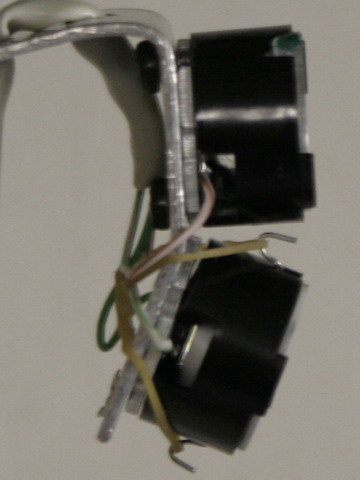
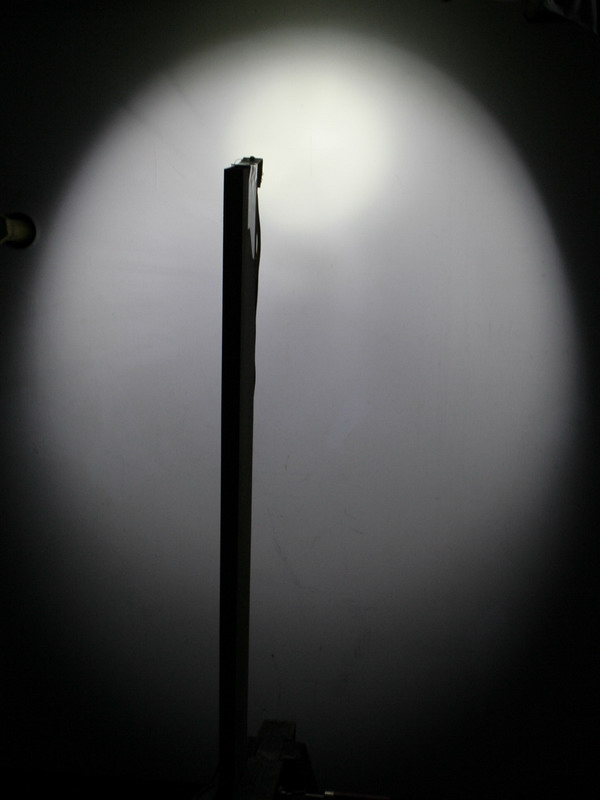
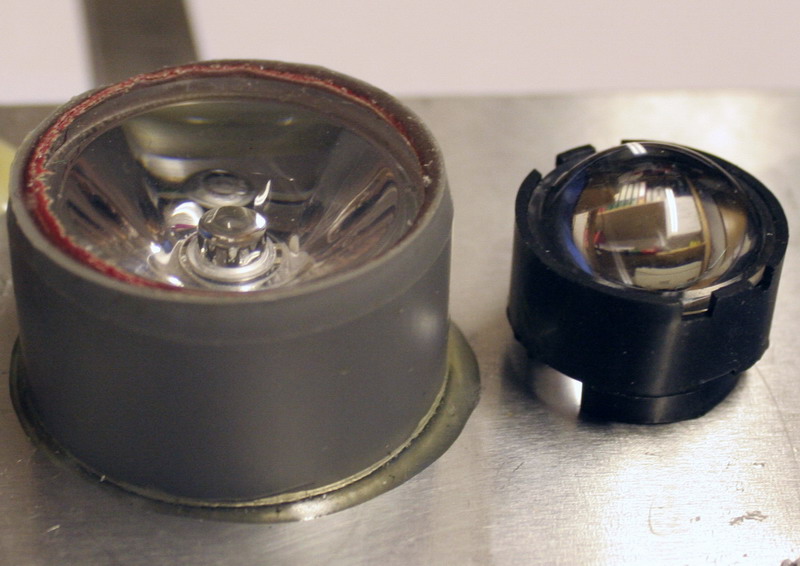
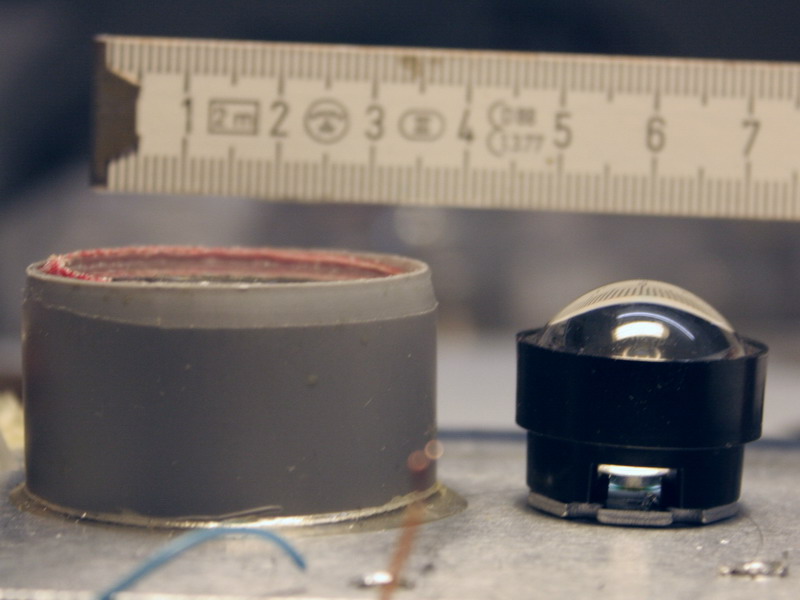
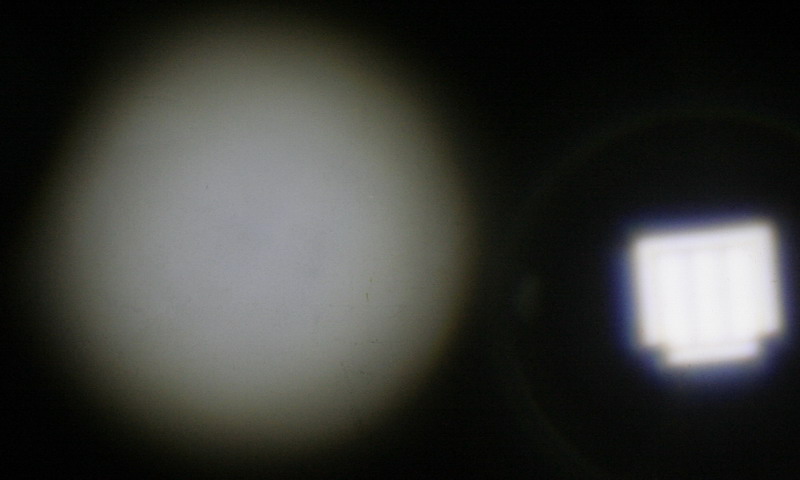
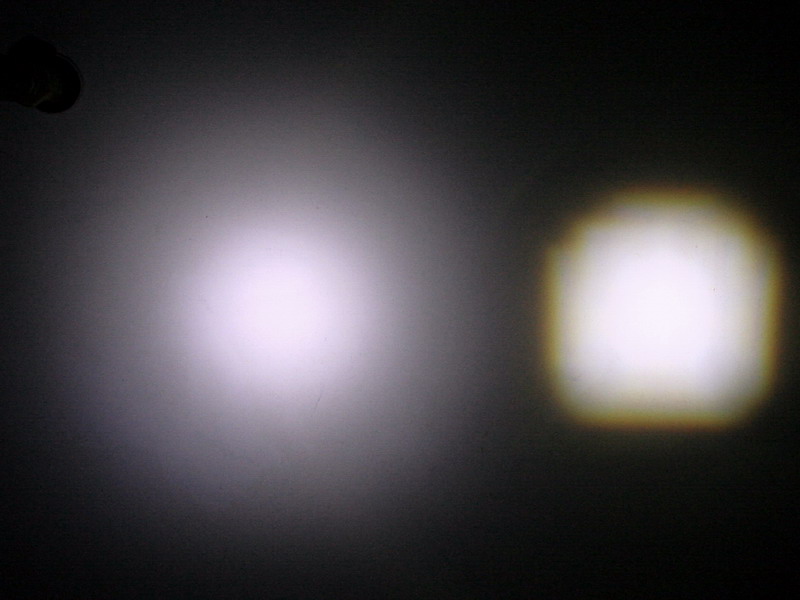
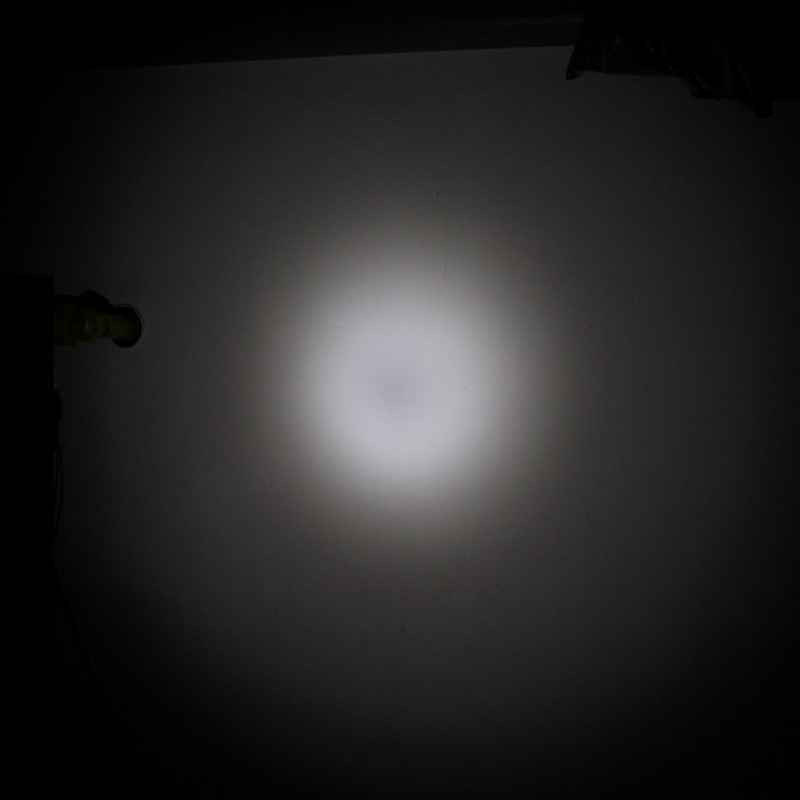
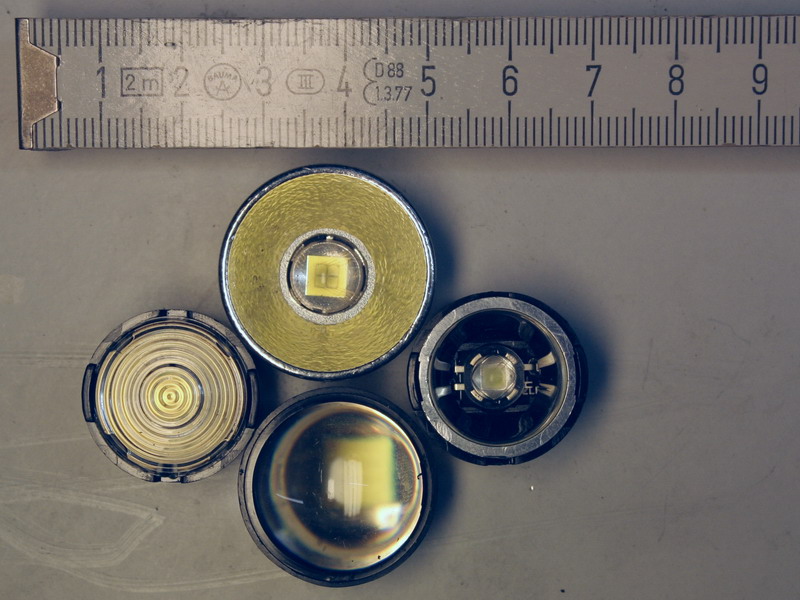
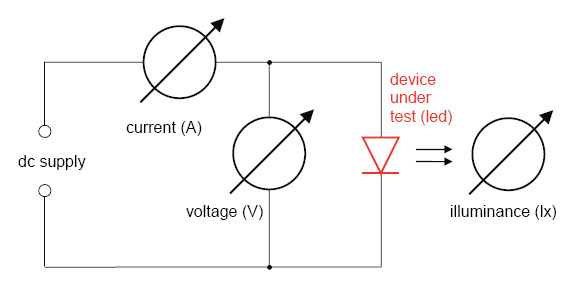
A four-LED light? ...
Might it not be easier as a general 2-led caving light, and a more 'specialist' room-lighting and shaft-spotting light? ...
Possibly a specialist light would be better as a handheld unit, since for shaft-examining (at least when looking upwards), a helmet mounted spot beam can literally be a pain in the neck.
Also for the P7 room-light, have you tried using a conical reflector? If you don't want any kind of beam, just a rather more forward-biased light than you get from a naked LED, it's definitely worth trying.
With your FWHM of 80° using reflectors - looking at the datasheet, a naked Cree has a FWHM of only about 90°.
How different is the reflectored Seoul to a naked Cree? Is it just a case of the Seoul+reflector eliminating 'wasted' extreme-wide light?